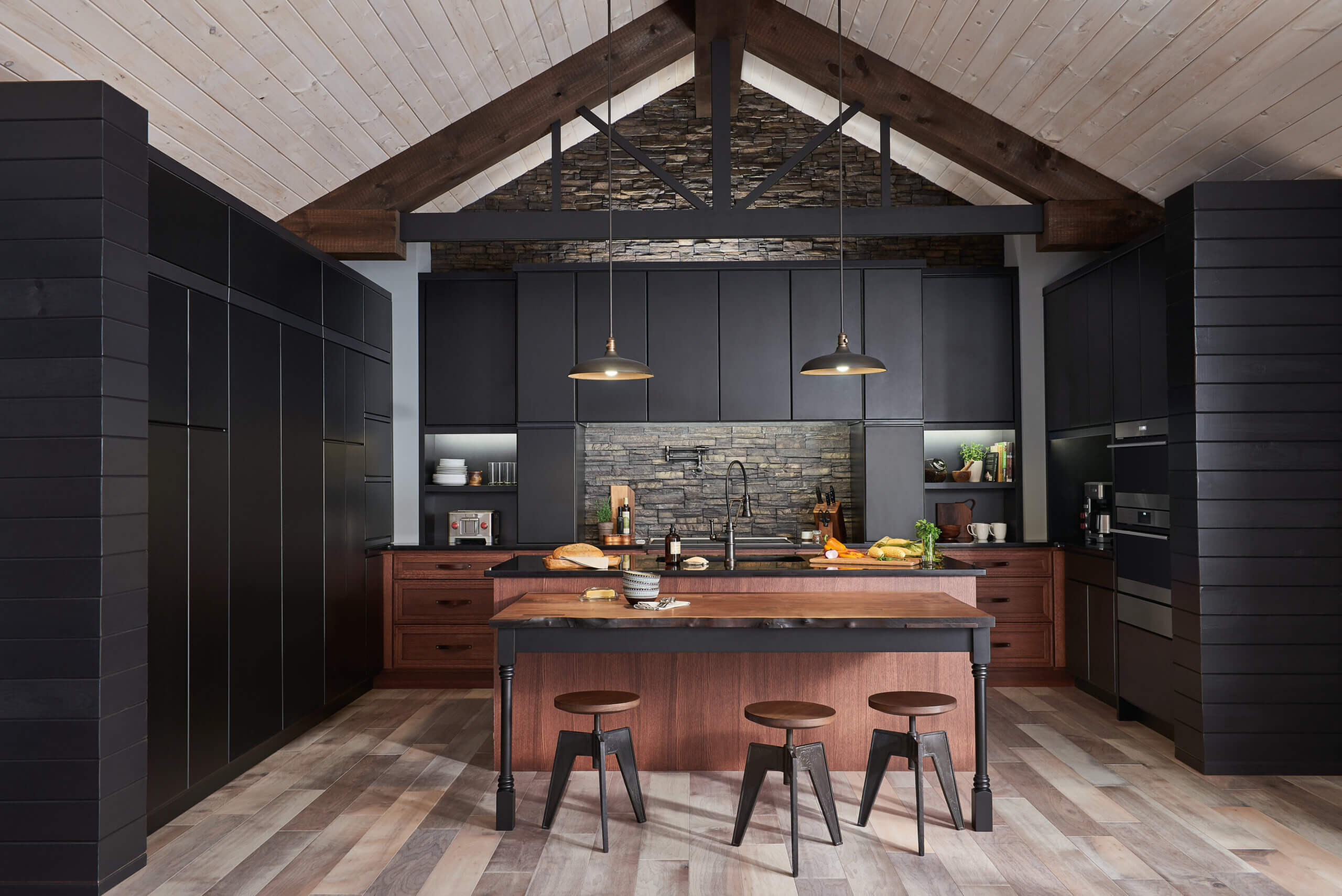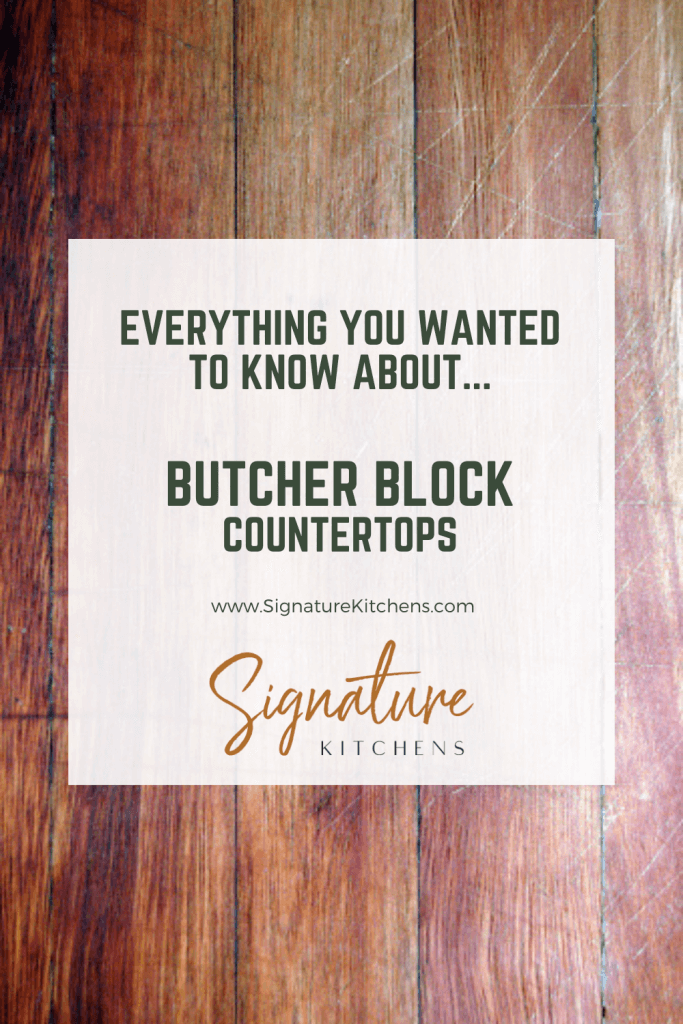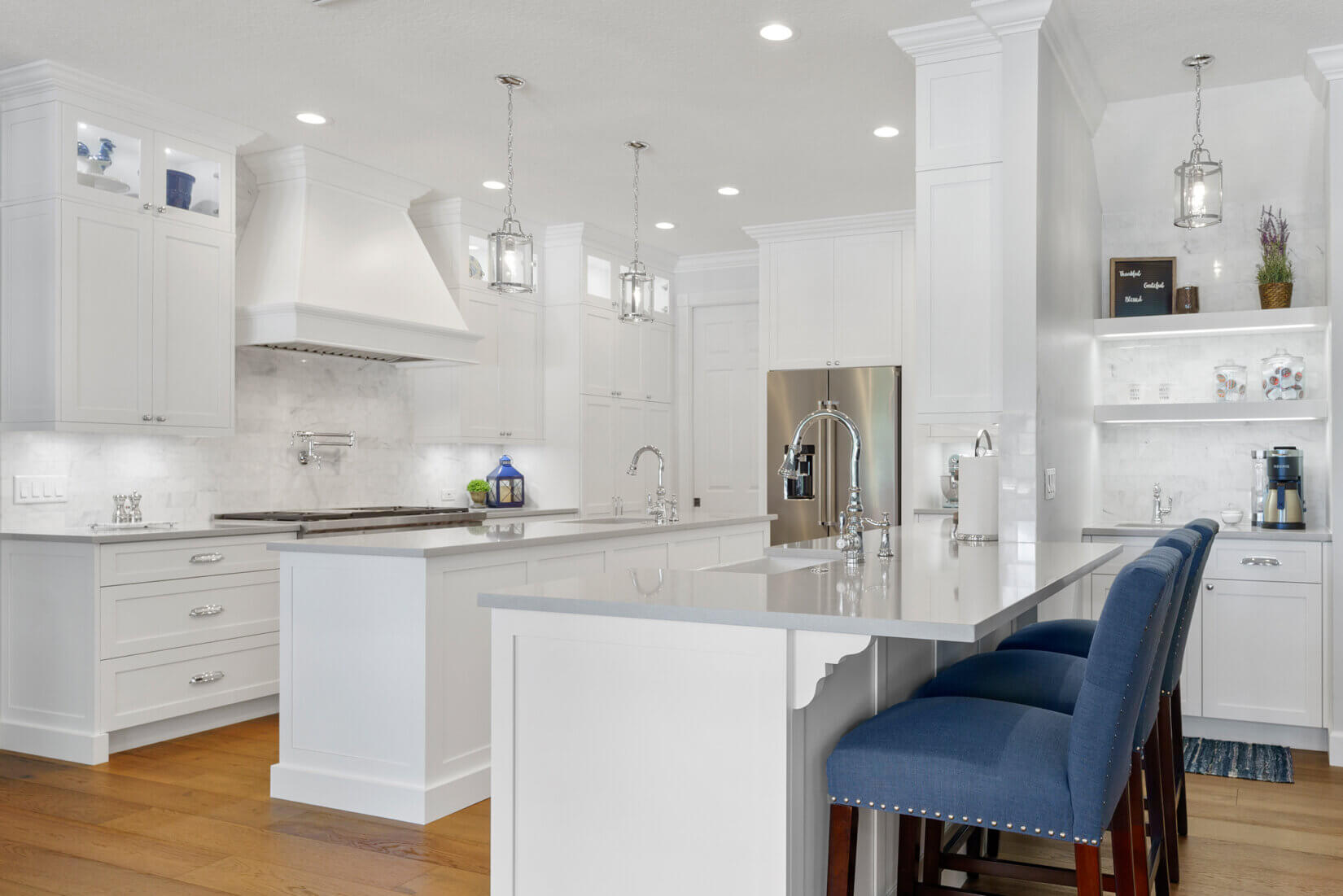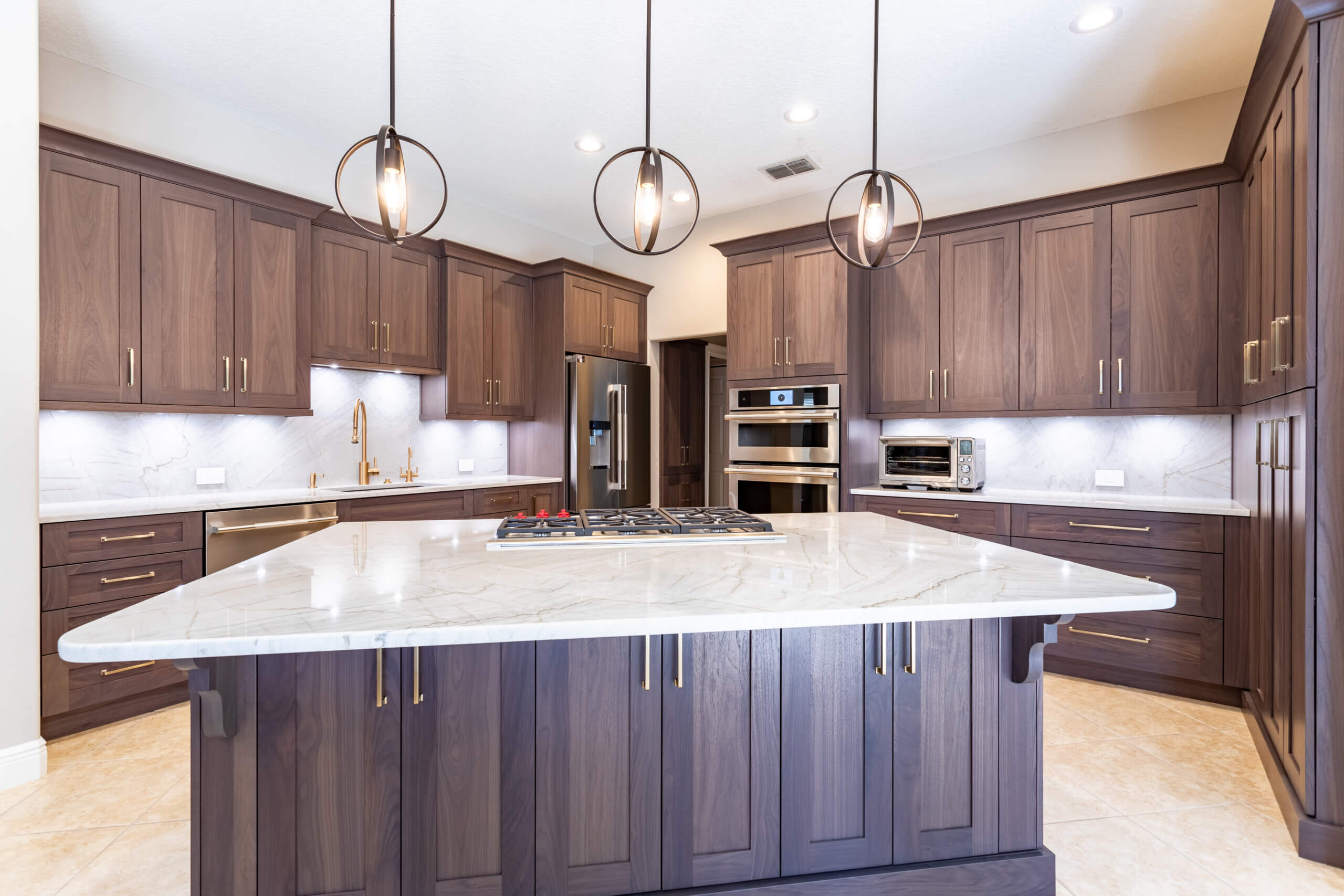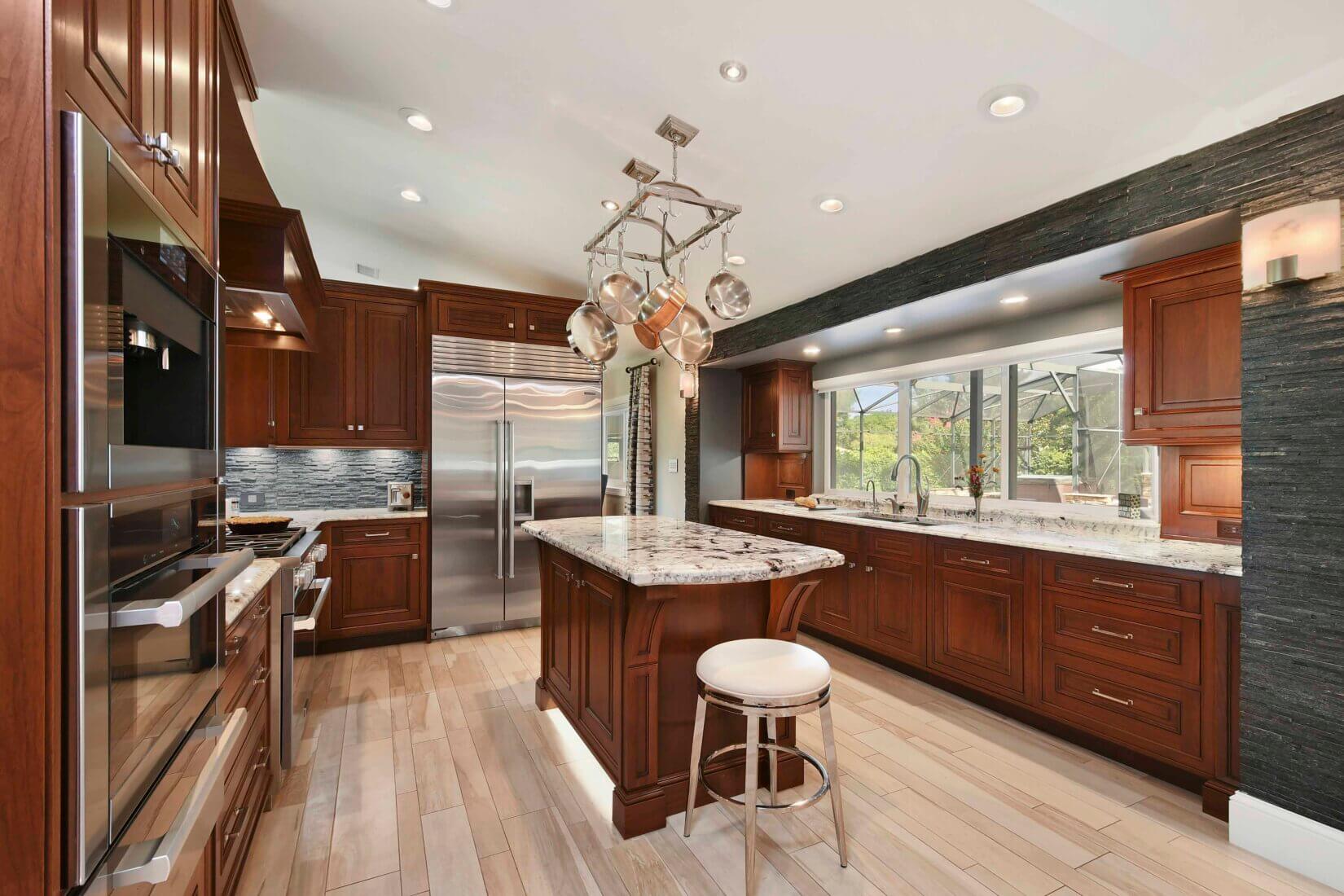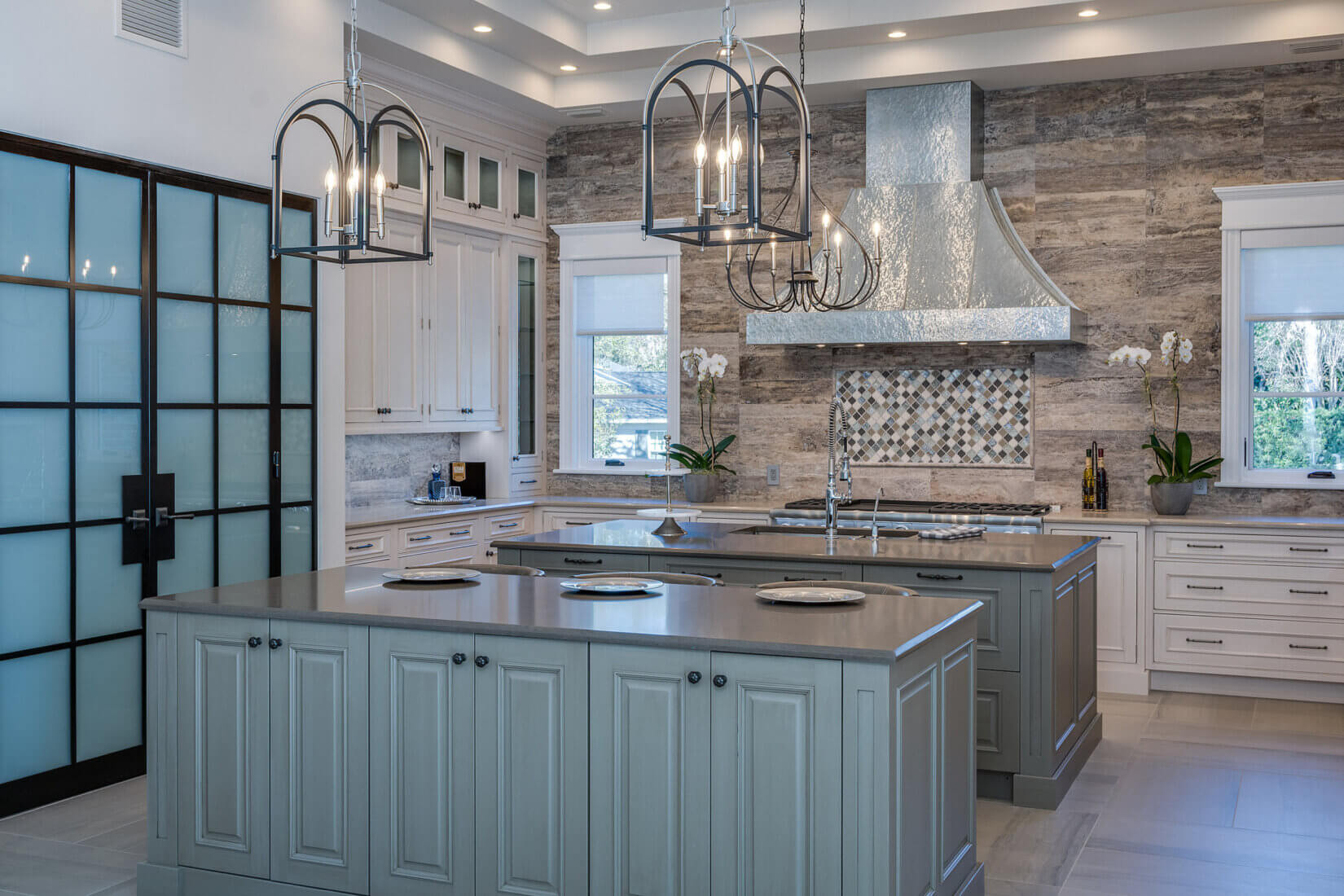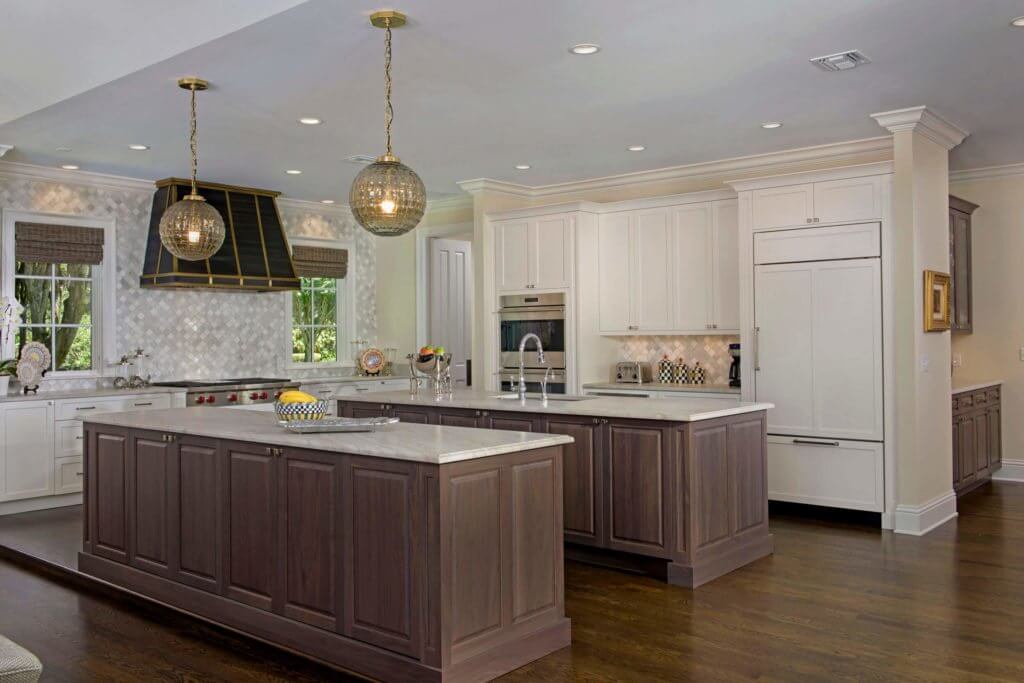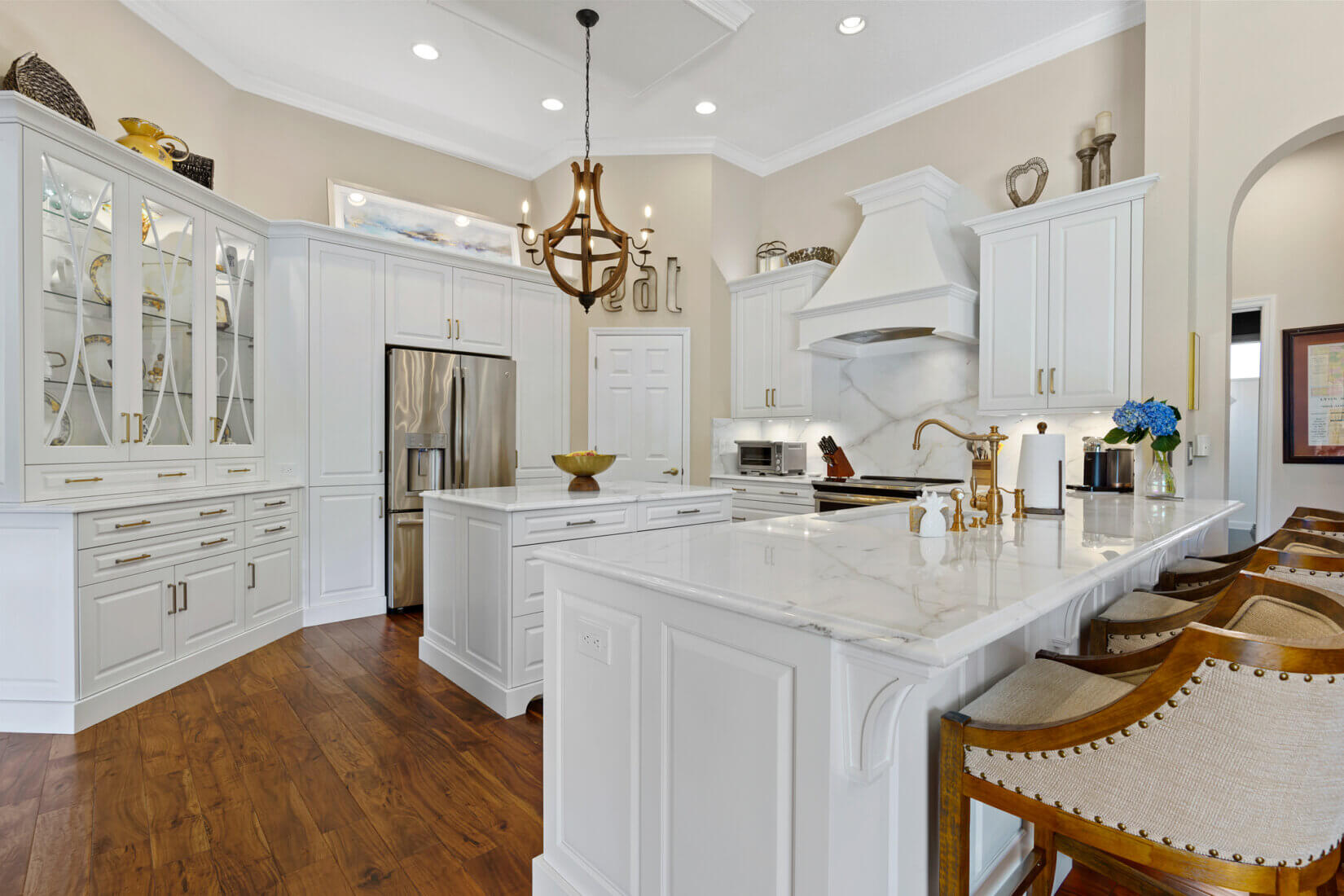Butcher Block Countertops
If you’re interested in having a warm and cosy-looking kitchen, which has become an increasingly popular trend these days due to the rising food culture, a butcher block countertop may be the ideal choice for you. Butcher blocks are named as such because they were originally used by butchers as a cutting material upon which they sliced pieces of meat. Over time though, they’ve become a relatively popular choice for kitchen countertop construction due to the warm and natural appearance they provide in addition to also being relatively affordable when compared with more expensive materials such as marble or granite. Butcher blocks are, however, notoriously difficult and expensive to maintain with their wooden exteriors easily being damaged by heat and water if not cared for properly. With proper care and maintenance though, a butcher block countertop can last a long time.
Relative popularity of Butcherblock Countertops
Butcher blocks have been experiencing a boom in popularity in recent decades due to shifting trends towards adopting more natural and rustic appearances. It’s easy to see how butcher blocks fit within this trend and are easily one of the most important materials for kitchen countertop construction in the early twenty-first century.
In terms of market share though, butcher blocks lag behind other more common material such as marble, granite and quartz with not more than 8% of U.S homeowners opting for butchers blocks in 2016 for example.
Their current rise in popularity though does mean that it is likely butcher blocks will become much more widespread in use in the next few decades due to their generally low-cost nature, unique appearance and longevity when properly maintained. If you’re interested in having a countertop that will remain in style well into the next few decades, butcher blocks are a relatively good option since they are very unlikely to lose their popularity in recent times due to changing cultural and artistic trends.
Butcherblock Countertop Wood Species
Butcher blocks are made of actual wood which allows for a diverse number of ways that it can be constructed. Butcher blocks are typically made from strips and pieces of various types of wood being glued together in different arrangements. How the boards are arranged and the different types of adhesive will produce widely different varieties of the material with the three most important being highlighted below:
First we should discuss some basic nomenclature of lumber so you’re able to grasp exactly what each variety means. A given piece of lumber has 3 basic sides, the edge, the face and the end. If you think of a 2”x4” piece of lumber that is 6 feet long, a 2”x4”x6”, the end is the most obvious part. If you were to place the piece of wood on the ground holding it vertically so that it was 6 feet tall, the part that touches the ground and is the highest in the air are the “ends”.
On that same piece of 2x4x6, the “edge” would be the 2” side and the face would be the 4” side. Now that we’ve got that out of the way….
Edge Grain
An edge grain countertop is the most common style of butcher block countertop. This configuration is very stable, strong and compared to the other construction methods is generally the least expensive.
Face Grain
A face grain or wide plank as it is sometimes referred to is more often used in cutting boards than countertops and generally this type of construction is not going to be as durable as the edge or end grain styles. As such this type of construction is not recommended for countertops however from an aesthetic perspective some believe this style to be the most beautiful as you get to see the full grain each piece of lumber.
End Grain
Both end grain countertops and cutting boards are the most durable type of butcher block. However it is also the most expensive due to how it must be constructed, it’s a very labor intensive process to create a countertop with an end grain style. The additional labor required to produce an end grain countertops results in an increase in cost between 40%-60% when compared to edge or face grain. As a result of the premium price you’ll see an end grain cutting board much more often that you’ll see a full end grain countertop.
While multiple different types of wood can be used for a butcher block, the most common types include Maple and Oak which are two of the most durable varieties of wood available.
The Cost of Butcher Block Countertops
Butcher block countertops are relatively cheap when compared with other more mainstream materials such as marble and granite. A typical butcher block kitchen countertop in the U.S state of Florida will range from between $25 to $65 per square foot on average, although a custom butcher block countertop can cost much higher at upwards of $120. Ultimately the wood species has much to do with the final costs as a Maple countertop and a Black Walnut countertop are going to have wildly different prices.
Overall, though, butcher blocks are relatively inexpensive, and it is possible to construct a very luscious looking countertop at a far lower cost than what it would take to purchase and install a marble or granite countertop.
If cost is a primary concern for you, and it is for many people understandably, a butcher block can be a great way to achieve a brilliant-looking countertop without having an extremely large budget as the most common varieties of this material cost almost half of what a more expensive material does.
There is, however, an issue with the long-term maintenance cost of butcher blocks if they are handled inappropriately, which this guide will cover in the following sections.
The Relative Hardness of Butcher Block Countertops
Hardness is often considered the second most important concern by homeowners when shopping for a countertop because they expect to use their countertop for keeping heavy items and possibly cutting foodstuff.
Despite its name, a butcher block is not a suitable material for actually cutting either fresh produce or meat. It might not cause damage to your knives than either marble or granite would, but the issue with butcher blocks is that they are not very hard at all if compared to a stone such as marble.
Although the exact degree of hardness of your butcher block will depend mostly on the type of wood being used, it will not last if subjected to force.
This does not mean that butcher blocks will break absolutely easily, but rather that since they are not as hard as stone, they will not be able to withstand force with the same durability. If hardness is a major concern for you, and you don’t like the idea of having to use a cutting board, a butcher block may not be the most ideal option for you, but if you don’t intend to be used using your counter for cooking purposes too much, it can still be a good choice.
How easily Damaged are Butcher Block Countertops
Butcher blocks are not very durable when contrasted with marble and granite. They will suffer from damage caused by blunt force, heavy objects and scratches far worse than any stone.
Butcher blocks also have additionally weaknesses including exposure to water or liquids which can cause the wood to rot or experience discolouration. This makes butcher blocks a difficult choice if you intend to have a sink within the vicinity of your countertop.
Butcher blocks are neither heat nor stain resistant, so they can be easily damaged if placed within the vicinity of hot appliances as well and are susceptible to shrinking if exposed to extreme dryness or humidity.
Butcher blocks are, therefore, very easily damaged if they are handled improperly or exposed to high temperatures, humidity or water. This makes them far less durable in contrast to marble and granite, but it does not mean they are unsuitable for countertop construction.
The Temperature Resistance of Butcher Block Countertops
Temperature resistance is a vital concern for most people since they intend to cook within the direct vicinity of their countertops. Butcher blocks, unfortunately, are not temperature resistant and will suffer from high damages if they are exposed to high temperatures.
This also means that it is not safe to place a hot pot or pan upon a butcher block as it will be damaged, so the use of a metal trivet is highly recommended. As long as trivets are used though, there should be no damages.
Overall, butcher blocks lag far behind with respect to temperature resistance in comparison to either marble or granite. But, if you use them strategically within your kitchen- far away from any stoves or ovens it’s unlikely your butcher block countertop will experience any noticeable damage.
Weakness of Butcher Block Countertops
Butcher blocks are vulnerable to high-temperatures, extremes in humidity or dryness as well as water as we’ve already established. Butcher blocks are also porous so there is a concern of germ growth them if not cleaned properly or regularly.
It is also very important that butcher blocks should be cleaned using appropriate cleaning items otherwise additional damages can be incurred.
Overall, butcher blocks are one of the less durable materials available for countertops, though that is not to say that a butcher block countertop will absolutely suffer from damage. As long as they are properly maintained, your butcher block countertop will last for a good period of time
Butcher Block Countertop Maintenance
Butcher blocks require regular maintenance and cleaning with sealed butcher blocks also requiring regular re-sealing. As long as your countertop is not exposed to high temperatures, extremes in humidity or dryness or to water, it should not be too difficult to main, although a butcher block countertop should be regularly cleaned and disinfected to avoid contamination.
Unlike materials such as marble or granite which suffer from damage from the use of abrasive cleaning materials such as ammonia, Windex, vinegar or bleach, it is possible to use these materials in diluted quantities on a butcher block countertop.
It is also advisable to use mineral oil although any residual quantities of oil left on the countertop should be removed immediately. With respect to cleaning, you can use a damp cloth and dish soap to clean the surface and sandpaper can be used to clean any deep stains.
Overall, maintaining a butcher block countertop requires a lot more effort than a marble or quartz one, but it is not particularly expensive to maintain.
The one major benefit to butcher block is the ability to have the countertop be completely restored by sanding it. This will make a mess in your house with sawdust likely going everywhere, but you’ll wind up with a brand new surface even decades after the original installation.
Pros of Butcher Block Countertops
Cost
Butcher blocks are relatively inexpensive when compared to more prestigious materials such as marble or granite. This makes them a great choice for budget-friendly consumers who don’t want to have to invest too much money.
Long-Lasting if Maintained
Assuming that it is not exposed to water, high temperatures, excess of humidity or dryness a butcher block countertop will last for decades. This is, however, entirely dependent on the quality of maintenance that is provided.
Repairable
Unlike stone, butcher blocks can be easily repaired if they experience cracks or breakages. The costs for repairing butcher blocks are also relatively low making them a good option for people who worry about repair cost.
Household cleaners can be used on it
Butcher blocks largely do not require special ph.-neutral cleaning solutions, unlike marble or granite which are susceptible to damage from abrasive cleaning solutions such as ammonia and vinegar which can be used on butcher blocks.
Customizable hue and patterns
Given the diversity of construction technique and wood types, it is possible to achieve some truly unique and interesting design patterns on a butcher block which is not possible with other materials.
Cons of Butcher Block Countertops
Weakness to Water
Wood will rot or experience discolouration if exposed to water, so it is inadvisable to have a butcher block countertop near a sink.
Not Temperature resistant
Butcher block countertops will suffer from damage if exposed to high temperatures, so it is not suitable to have them around stoves.
Requires a Lot of Effort to Maintain
Butcher blocks may require annual sealing in addition to daily cleaning making them a very high-effort material that needs to be properly taken care of.
Susceptible to Patina development over time
Depending on your perspective this may not be a negative, but since butcher blocks are made of wood, they develop patinas over time which will change the appearance of the countertop. Some regard patina development as charming and welcome it while others see it as a negative.
Susceptible to scratches and damage
Wood is not a very resistant material so butcher blocks can be much more easily damaged than stone. Cutting on top of a butcher block is especially inadvisable since knives will leave scratches and marks upon the countertop.
